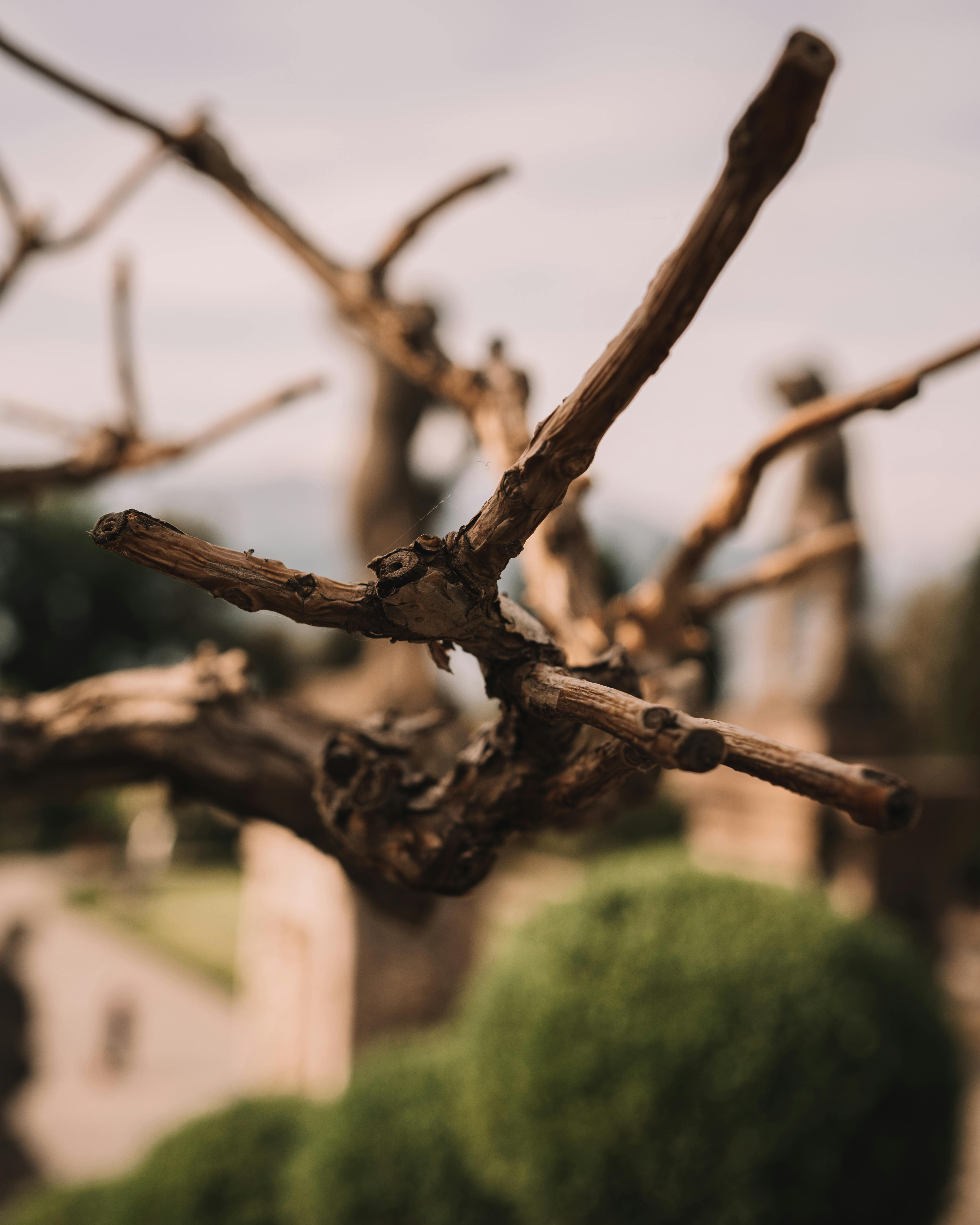Imagine facing a forest full of towering giants, each tree presenting its own unique challenges to cut down. As you stand before this imposing task, you can’t help but wonder: what is the most difficult tree to cut down? In your quest for knowledge, you will journey through the realm of arboriculture, exploring the characteristics and intricacies of various tree species. Join us on this exploration to uncover the secrets and surprises hidden within the world of trees.

Factors Affecting Tree Cutting Difficulty
Cutting down trees is not always a simple task. There are several factors that can influence the difficulty of the process. Understanding these factors is crucial for ensuring a successful and safe tree removal. Here are some key considerations when it comes to tree cutting difficulty:
Tree Size
The size of a tree plays a significant role in determining the difficulty of cutting it down. Various aspects of tree size, such as height, diameter, and canopy spread, can all affect the complexity of the removal process.
Height
Taller trees pose greater challenges due to their height. Specialized equipment and techniques may be required to safely bring down a tree of substantial height. Additionally, the higher branches and limbs increase the risk of accidents during the cutting process.
Diameter
The diameter of a tree trunk also impacts the difficulty of cutting it down. Thicker trunks are generally harder to tackle, as they require more effort and time to properly saw through. Cutting down trees with larger diameters often necessitates the use of heavy-duty chainsaws or other powerful cutting tools.
Canopy Spread
The width of a tree’s canopy, or the horizontal spread of its branches, can complicate the cutting process. Wide-spreading canopies may extend over nearby structures or obstruct access to the tree, making it more challenging to safely remove.
Tree Species
Different tree species have varying properties that can affect the difficulty of cutting them down. Understanding the characteristics of specific tree species is essential for developing an effective tree removal strategy.
Hardwoods
Hardwood trees, such as oak or maple, are known for their dense and sturdy wood. These trees can be particularly challenging to cut down, as their tough wood requires more effort and specialized cutting tools to effectively remove.
Softwoods
Softwood trees, like pine or spruce, have lighter and less dense wood compared to hardwoods. While their wood may be easier to cut through, softwoods can still present challenges due to their height, diameter, or canopy spread.
Conifers
Conifers, which include evergreen trees like fir or cedar, often have dense foliage that can complicate the cutting process. Their thick branches and needles can hinder visibility and make it harder to safely maneuver around the tree during removal.
Deciduous Trees
Deciduous trees, such as maple or birch, shed their leaves annually. While these trees may have lighter foliage compared to conifers, their size and overall structure can still contribute to the difficulty of cutting them down.
Tree Health
The health of a tree significantly impacts its stability and the ease of cutting it down. Various factors can compromise a tree’s health and make the removal process more challenging.
Weak or Decaying Wood
Trees with weak or decaying wood are more likely to be structurally unsound, posing a higher risk during removal. Unstable branches or an overall weakened structure can make cutting these trees down more difficult and dangerous. Professional arborists can assess the condition of a tree’s wood to determine the best approach for removal.
Insect Infestation
Insect infestations, such as wood-boring beetles or termites, can cause significant damage to a tree’s internal structure. Infested trees may have compromised structural integrity, making their removal more demanding. Additionally, when cutting down infested trees, precautions need to be taken to prevent the spread of insects to nearby healthy trees.
Disease
Disease can weaken a tree, making it more challenging to cut down safely. Trees affected by diseases such as Dutch elm disease or oak wilt can have brittle or compromised wood, which requires careful consideration during removal. Proper diagnostics by professionals are essential for identifying diseased trees and determining the best course of action for their removal.
Tree Location
The location of a tree plays a vital role in the difficulty of cutting it down. Several factors related to its proximity to structures, obstacles, and the terrain impact the safety and complexity of the removal process.
Proximity to Structures
Trees situated near buildings, fences, power lines, or other structures pose additional challenges during removal. Careful planning and precise cutting techniques are necessary to avoid potential damage to surrounding structures.
Obstacles
Obstacles, such as rocks, other trees, or shrubs in close proximity, can make accessing and maneuvering around the tree more difficult. These obstacles may require additional time and effort to clear, increasing the complexity of the tree removal process.
Terrain
Uneven or sloped terrain can complicate the tree cutting process. Working on challenging landscapes may require special equipment or techniques to ensure the safety of the workers and prevent accidents.
Tree Age
The age of a tree can influence its overall strength and structure, which in turn affects the difficulty of cutting it down.
Young Trees
Young trees typically have thinner trunks and a less developed root system, making them easier to remove compared to older and more established trees. However, caution must still be exercised, as young trees can be unstable depending on their species and health condition.
Mature Trees
Mature trees strike a middle ground in terms of difficulty. While they may have thicker trunks and larger canopies, their structural stability is generally well-established. Removing mature trees may require more time and effort compared to young trees due to their size and complexity.
Old Trees
Old trees can be the most challenging to cut down due to their size, density, and the potential for structural decay. These trees may have extensive root systems and heavily branched canopies, requiring careful planning and expertise for a safe removal.
Tools and Techniques for Cutting Difficult Trees
Successfully cutting down difficult trees requires a combination of specialized tools and techniques. Professionals trained in tree removal often utilize a variety of equipment and methods to ensure safe and efficient tree cutting.
Chainsaws and Axes
Chainsaws are commonly used in tree cutting due to their power and versatility. Depending on the size and complexity of the tree, different types of chainsaws may be needed. Heavy-duty chainsaws equipped with larger blades are required for thicker trunks, while smaller chainsaws can be used for more delicate tasks. Axes may also be employed, particularly for felling small trees or removing branches.
Climbing and Rigging
When dealing with tall trees or those in difficult-to-reach locations, climbing and rigging techniques may be employed. Professional arborists equipped with specialized gear climb the tree using climbing ropes and harnesses. They can then strategically remove branches or sections of the tree, ensuring controlled descent and minimizing the risk of damage to surrounding structures.
Crane-Assisted Removal
For particularly large or hazardous trees, crane-assisted removal may be necessary. Cranes provide the lifting power to safely remove sections of the tree, preventing damage to nearby structures and ensuring the safety of the crew.
Controlled Dismantling
In situations where there are obstacles or limited space, controlled dismantling may be the best approach. This method involves carefully cutting the tree into sections from the top down, allowing for a controlled descent and minimizing any potential damage or risks.

Challenges Faced when Cutting Difficult Trees
Cutting down difficult trees presents several challenges that need to be carefully managed to ensure a safe and successful removal process.
Risk of Injury
Tree cutting inherently involves potential risks to the workers involved. Height, heavy machinery, and falling debris can all pose serious hazards. To mitigate such risks, professional arborists and tree removal experts undergo rigorous training and adhere to strict safety protocols.
Damaging Surrounding Structures
The proximity of trees to structures, such as buildings, fences, or power lines, increases the likelihood of accidental damage during the removal process. Careful planning, precise cutting techniques, and the use of appropriate equipment are crucial for minimizing the potential for collateral damage.
Environmental Considerations
Cutting down trees can have environmental implications, especially if the tree species is rare, protected, or contributes to the local ecosystem. Responsible tree removal professionals take into account environmental factors and may suggest alternative solutions, such as tree preservation, when appropriate.

Examples of Difficult Trees to Cut Down
While the difficulty of cutting down a tree can vary depending on several factors, there are specific tree species known for presenting greater challenges during removal. Here are some examples of difficult trees to cut down:
Sequoia Trees
Sequoia trees, known for their enormous size and large branches, can be particularly challenging to cut down. Their height and girth require specialized equipment and techniques to safely remove them.
Baobab Trees
Baobab trees, native to Africa, are renowned for their massive trunks and expansive canopies. Their unique biology and size make them difficult to cut down, requiring the expertise of professionals well-versed in handling such specimens.
Black Ironwood Trees
Black Ironwood trees are notorious for their dense wood, which is exceptionally hard and resistant to cutting. The hardness of their timber makes these trees time-consuming and labor-intensive to remove.
Bristlecone Pine Trees
Bristlecone pine trees, known for being some of the oldest living organisms on Earth, can present challenges due to their age and structural complexity. These ancient trees often have twisted branches and gnarled trunks, making their removal intricate and demanding.

The Role of Professionals in Cutting Difficult Trees
Cutting down difficult trees is not a task to be taken lightly. The expertise and knowledge of professionals are invaluable in ensuring a safe and successful tree removal. The following are professionals who play a crucial role in cutting down difficult trees:
Arborists
Arborists are trained professionals who specialize in the care and management of trees. Their expertise in tree anatomy, health assessment, and safe removal techniques make them an essential resource when dealing with difficult trees. Arborists can determine the best approach for removing a tree while minimizing the risks and potential harm to surrounding areas.
Tree Removal Companies
Tree removal companies have the equipment, crew, and experience necessary to tackle the most challenging tree cutting projects. These companies often employ professional arborists and follow standardized safety procedures to ensure efficient and responsible removal.
Forestry Experts
Forestry experts possess extensive knowledge of tree species, ecosystems, and environmental considerations. When dealing with rare or protected trees, consulting with forestry experts can help determine the best course of action that minimizes the impact on biodiversity and natural habitats.
In conclusion, cutting down difficult trees requires careful consideration of various factors such as tree size, species, health, location, and age. The right tools and techniques, along with the expertise of professionals, are essential for a successful and safe removal process. By understanding the challenges associated with cutting difficult trees and by engaging the services of qualified professionals, the task can be accomplished efficiently and responsibly.


